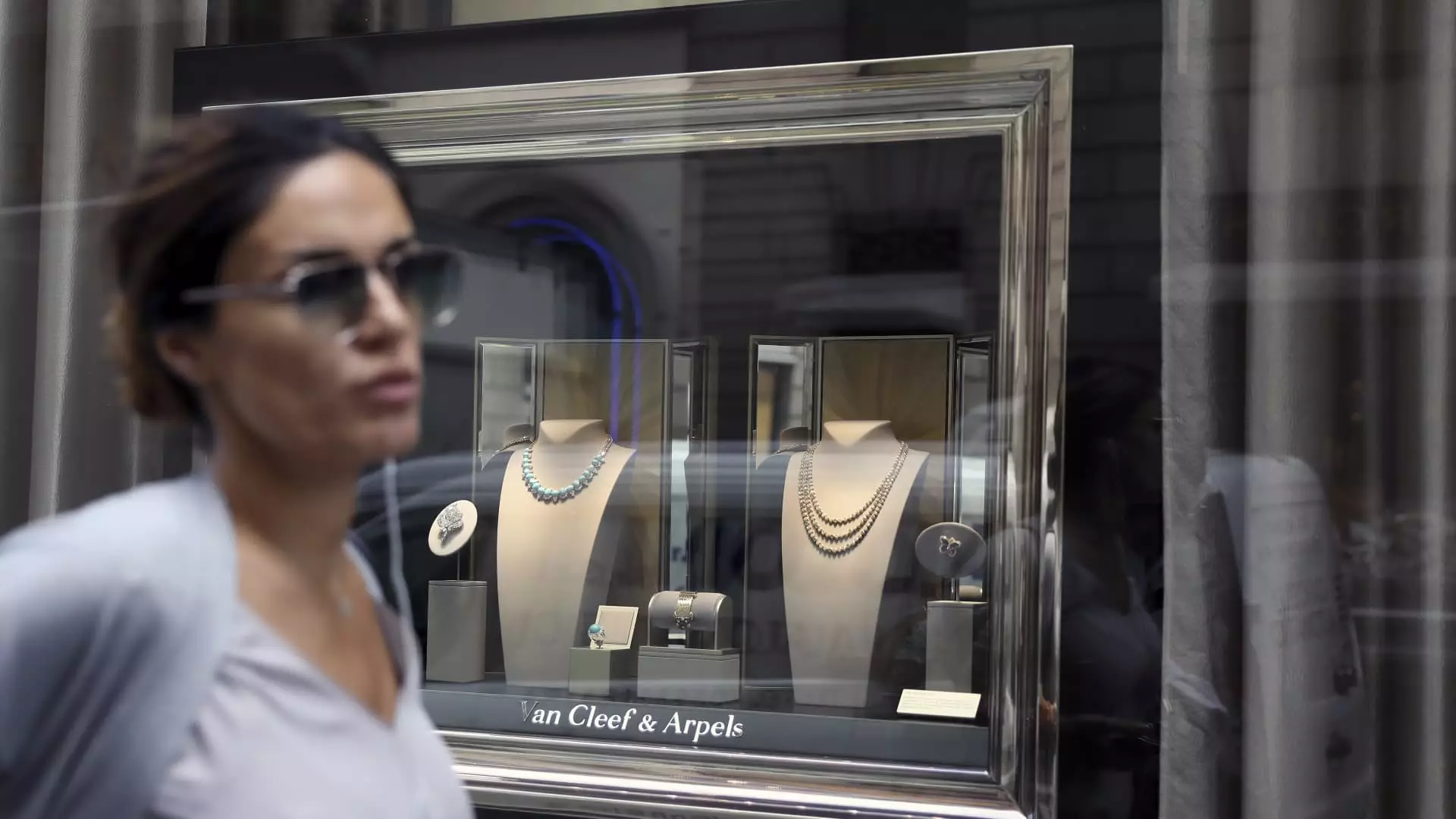In today’s world, where incomes are polarized and the middle class is increasingly besieged by economic pressures, the affluent elite continue to manifest their excess through extravagant jewelry choices. A diamond-encrusted ring or a rare gemstone necklace serves not just as a fashion statement but as a glaring indication of societal divides. While the broader market struggles with economic uncertainties, the super-rich remain blissfully insulated, gravitating toward only the most exclusive luxury items. This stark juxtaposition raises questions about the meaning and implications of wealth in a time when globalization has led to greater economic volatility for the majority.
For companies like Swiss luxury powerhouse Richemont, this exclusivity translates into positive growth indicators. Brands under the Richemont umbrella, including the illustrious Van Cleef & Arpels, Buccellati, and Cartier, are not merely in the game of luxury; they thrive at the very top of consumer desirability. The sentiments echoed by Luca Solca of Bernstein resonate strongly in today’s climate: there’s no second-place in this brutal hierarchy. Despite fierce competition from other luxury conglomerates like LVMH, Richemont is flourishing, highlighting the unsettling reality of a society where jewelry is a form of currency and a vessel of value that further entrenches divides.
Resilience in Adversity: Richemont’s Strategy
Richemont’s latest fiscal reports reveal an impressive 11% surge within their Jewell Maisons division, making it the company’s crown jewel amid broader sectoral declines noted by competitors. In contrast, LVMH, once revered as the titan of luxury, has announced stagnant sales, particularly within its watch and jewelry segments. This illustrates a growing sentiment that while the market as a whole may face headwinds, certain brands can still gain traction based on heritage, desirability, and sheer opulence.
Yet, this isn’t merely about numbers; it encapsulates an underlying narrative of strategic advantage. Richemont chairman Johann Rupert points to market share growth in jewelry as a veritable sign of health, but we must ask: at what cost? Are these gains derived from fundamentally sound business practices, or are they symptomatic of systemic economic inequalities that reward the wealthy while leaving others behind? In a luxury market reliant on the perceivable value of products rather than their intrinsic utility, challenges rooted in higher gold prices and economic tariffs threaten to dismantle the carefully constructed opulence that brands like Richemont have built.
The Fragile Watch Market and Consumer Behavior
Further complexities emerge when considering Richemont’s Specialist Watchmakers division. The spectacular 13% revenue drop in watch sales, particularly in China—a previous powerhouse market—paints a picture of fragility within a sector previously thought to be immune to economic cycles. The pandemic has inflated demand to dizzying heights only to leave an unwieldy quantity of timepieces in consumer hands, leading to a long-term, inevitably delayed rebound.
Luca Solca’s characterization of the luxury watch market as an entity requiring digestion time after the pandemic is not one to gloss over lightly. It offers insight into an ongoing consumer relationship with luxury goods that is grounded in possession rather than practicality. Jewelry, with its frequency of purchase and comparative affordability relative to fashion staples like handbags, provides a dynamic contrast. It creates a worrisome dependency on luxury jewelry at the expense of watch manufacturers, a scenario that could lead to long-term brand instability if not managed correctly.
Underlying Implications of Luxury Consumerism
One must delve deeper into the implications of such an environment. The rise of jewelry amidst macroeconomic challenges does not merely imply a resilience of brands like Richemont; it illustrates a troubling trend of luxury that increasingly caters to a smaller, exclusive audience. This shift calls into question our societal values—how we attach worth to material items—can perpetuate inequality. A society that glorifies ostentation while neglecting the struggles of the working class may very well be laying the groundwork for a backlash against such overt displays of wealth.
In Richemont’s journey, the paradox is palpable: while it thrives in the realm of luxury jewelry, it cannot escape the broader economic realities that will inevitably impact all sectors. As they forge ahead, they must balance profitability with societal responsibility, mindful of the fact that the jewels adorning their clients can also serve as justifications for the vast economic disparities that define our times. This calls for an introspective examination: in a world so clearly divided, what is the true value of luxury?


Leave a Reply